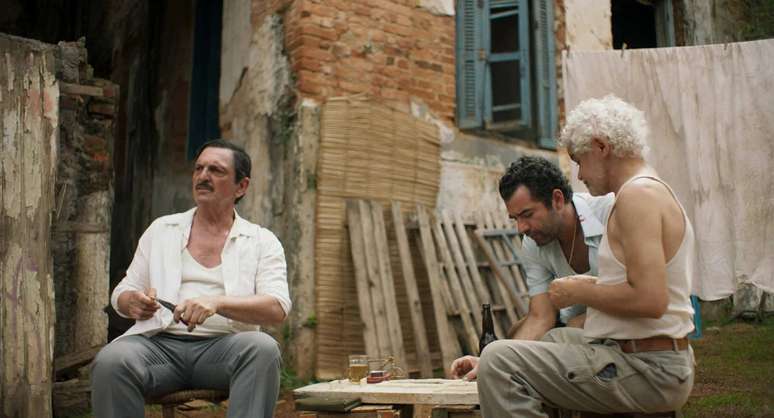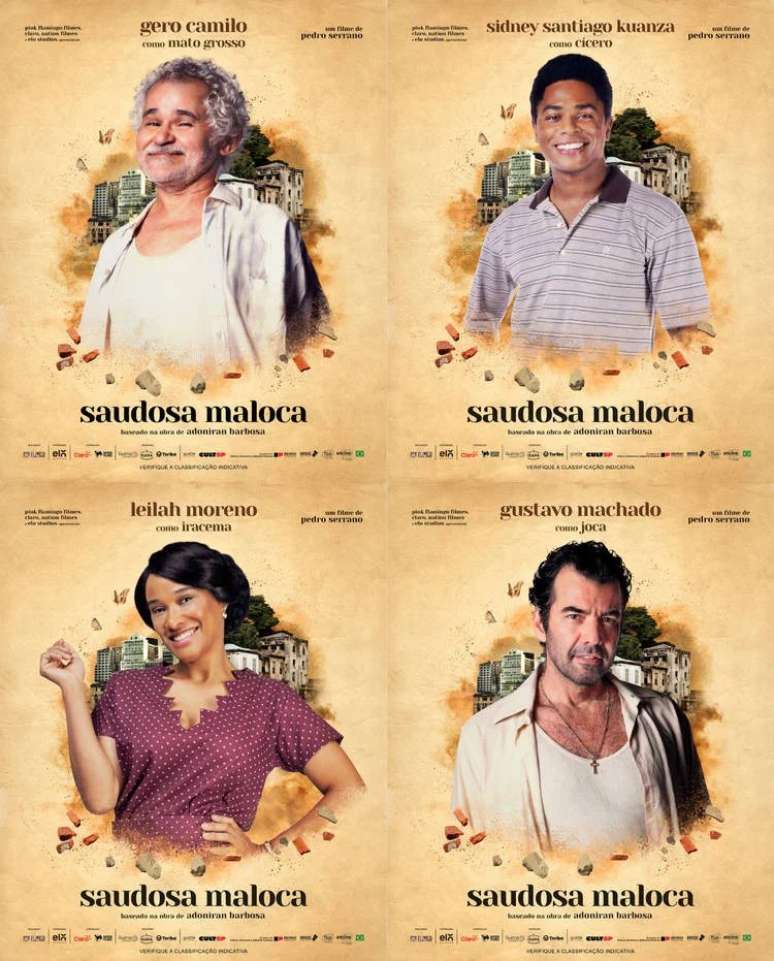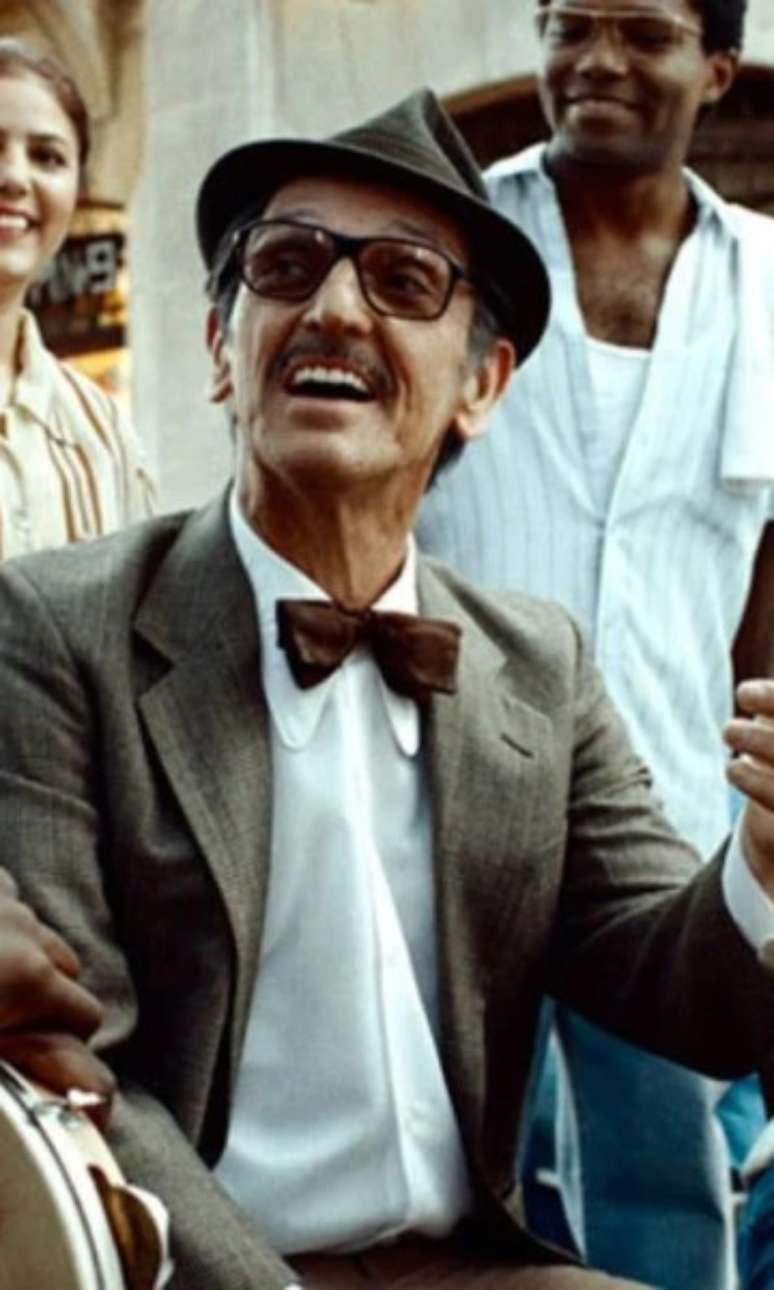The film will be released on March 21 […]
João Rubinato, the eternal Adoniran Barbosa of Saudosa Maloca, was a delivery boy, street cleaner, weaver, plumber, painter and waiter. But his best profession was that of “city poet”.
And that’s what the public will be able to see, starting from March 21st, when the comedy arrives in theaters Saudosa Malocadirected by Pedro Serrano and Paulo Miklos in the role of Adoniran.
The stakes are high and the film will be screened in more than 30 Brazilian cities, including Sao Paulo, Rio de Janeiro, Belo Horizonte and several capitals in the Northeast.
The film recalls the memories of the composer and singer, who tells the waiter Cícero, known as Ciço, stories of a San Paolo that no longer exists, remembering his friends Matogrosso (Gustavo Machado and Joca (Gero Camilo), both in love with Iracema (Leilah Moreno) ), characters who jump from Adoniran’s humorous lyrics to this mischievous fiction with agile dialogues.
– “Let’s go back to boutiques?”, asks the girl after a night of pleasure.
– “I can’t, my mother won’t sleep until I arrive,” replies the scoundrel Joca.
Any resemblance to Eleven o’clock trainthe classic that consecrated Adoniran as the “father of Sao Paulo samba”, is a pure cross-section of this script well tied together by Serrano, Guilherme Quintela (‘Meu Amigo Hindu’) and Rubens Marinelli (‘O Santo Maldito’).
In the form of flashbackat the center is the coexistence of friends Adoniran, Joca and Mato Grosso who, between one cachaça and another, need to find another maloca to live in, after the ‘owner of the mandô knocked it down’.
– “The brothers are right. We will find another place”, says Paulo Miklos, in the priceless role of the protagonist, half bumpkin half Italian.
As Miklos described, in an interview with journalist Simone Zuccolotto, “[Adoniran] it’s a character he created for himself and [com] this way of speaking adonires”.

The film is the materialization of the classics of the composer from São Paulo, both in the form of dialogues and scenography, such as The mothsa song remembered in the scene with four moths circling around a lamp in the longhouse.
It is Adoniran to be seen and heard at the cinema, in this film which has as its protagonist the accelerated urbanization of the city of Sao Paulo (but rest assured that it is not a musical and much less a collage of songs to please the fans).
“Moths when the cold comes
Keep turning the lamp after turning it on by yourself.
I am the lamp and the many are the moth”
(“Like Mariposa” – Adoniran Barbosa)
Another reference is Hyracemawhich not only gives its name to the coveted clerk of the bar frequented by the trio, but also has its plot told in the feature film (and if you still don’t know the lyrics of the samba, which I doubt, better listen later to avoid spoilers).
“Metaphor for experiences of loss in the big city, Hyracema creates a feeling of discouragement in the face of the irreparable pain of separation”, analyzes researcher Francisco Rocha in the book Adoniran Barbosa: the poet of the city (Editorial study).
Saudosa Maloca AND Samba do Arnestowith the right to show up at the door, in Brás, are also in the screenplay of this film, which also features Sidney Santiago Kuanza, in the role of Cícero, and Noemi Marinho, in the role of Joca’s mother, the one who lives there in Jaçanã.
The homage to the “Chaplin of Samba Paulista”, as Adoniran was called in a report appearing in the Jornal da Tarde in 1980, is repeated in the circus interpretation of the Machado-Camilo duo, which guarantees the tone clown theatrical, when his characters Joca and Matogrosso prepare to look for work or in the scene in which they both make two sandwiches skewered on a fork dance in the air.

In Sao Paulo in Saudosa Maloca
Seventh child of an Italian immigrant couple, João Rubinato was born in Valinhos, in 1910, and lived in other cities of São Paulo, such as Jundiaí and Santo André. But it was in the big city that the “narrator of the metropolis” literally drank to compose the chronicles sung about him.
Therefore, in Serrano’s film, winner in the Best Film category at the Gramado (RS) and Bilbao (Spain) festivals, the city of Sao Paulo plays a fundamental role in the construction of the screenplay.
In the capital since 1932, Adoniran lived in a boarding house on Ladeira Porto Geral. But, in the story now told on the big screen, his famous maloca is set in Vila Itororó, a group of rental houses built from demolition materials, starting in the 1920s.

Located in Bela Vista, on the banks of Avenida 23 de Maio, the place, which is currently a cultural center, has become famous for its palace with columns, terrace, fountains and sculptures, some of which were taken from the old São José Theater .
Lito Mendes da Rocha’s photography imprints the nostalgic tone of the work, both in the poetic scenes recorded on the viaduct of Santo Efigênia, and in the greyish blue of the moments in which Adoniran tells his stories to the waiter Ciço, in contrast with the sunny memories of the composer, in yellowish and lighter tones.
If then “pogress” was combined with work, in Saudosa Malocaprogress is art.
LEARN MORE
Saudosa Maloca
It comes out in theaters on March 21st
Data sheet
Executive production: Renata Martins and Giovana Amano
Launch: Paulo Tiefenthaler, Carlos Gimenez, Izak Dahora, Zemanuel Piñero, Ney Piacentini, Leiza Maria, Tassia Cabanas, Guilherme Rodio, Dagoberto Feliz, Raimundo Moura, Victor Salomão, Guilherme Conceição, Rodrigo Mazzoni, Eduardo Zanotti, Fabio Carvalho, Nataly Cabanas, Bruno Faldini and Alex Mazzanti
Artistic direction: Claudia Terçarolli
Type: drama, comedy
Village: Brazil
Year: 2023
Duration: 108 minutes
I WAIT WEB HISTORY

Source: Terra
Ben Stock is a lifestyle journalist and author at Gossipify. He writes about topics such as health, wellness, travel, food and home decor. He provides practical advice and inspiration to improve well-being, keeps readers up to date with latest lifestyle news and trends, known for his engaging writing style, in-depth analysis and unique perspectives.







